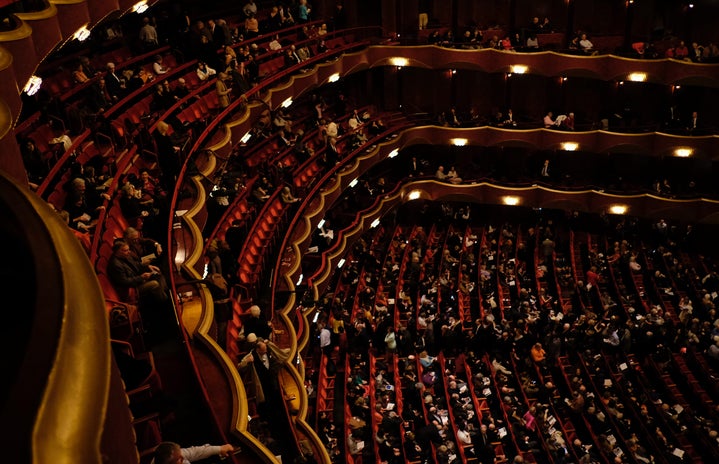Artist’s are always creating and leaving their marks on the world, but Melina hopes to just heal souls–both her own and others. I got to sit down with her and discuss her passion and how it has shaped her world.
Melina is a senior with a Fine Art major with a specialization in painting/drawing and psychology minor. While she isn’t quite sure where she wants to take her artistic ability career wise, she knows that she wants to help people. Because of that selfless desire, she considered a career in art therapy. However, Melina isn’t one to just throw herself into something without deep thought, so she plans on shadowing to get a better understanding of the field. Her ultimate goal is to do a mural for businesses or public spaces that are frequented a lot by people and would brighten their day. “I kind of just gravitate towards creating because I’m better at it than math. I usually create when I experience things really happy or sad. When I came back from camp in Greece and when my grandfather passed away more was at my disposal. It’s harder just living day to day because you don’t remember how you felt in that time of extreme emotion”.
In November, Melina created an art exhibit exploring the feelings of grief and loss. The exhibit, entitled Paradise Lost, was comprised of an abstract piece, a woven rug, religious icon paintings, and a wall full of letters from various people. It was difficult at first to come up with an idea that interested others while enjoying it herself. However, when she came up with the idea for Paradise Lost, Melina was ecstatic to see the final result. The idea for the letter wall was spawned from the death of a boy in her hometown. Melina thought about his family and the kind of things that could help in that situation which brought her to community. “I didn’t expect to get that many letters. They all came the last week too so I was concerned. It was crazy to see all these people who weren’t religious yet connected to my piece. I think that was the point though…to write about what you want to write about. They all went so well together. I am the type of person who likes to do things with other people, see how things affect people like they affected me. Putting it all together made it more powerful than I thought it would be”. Along with the wall of letters, Melina created an abstract piece which is deeper than the surface level. It was critiqued as being “not so pretty” because the paint is the color of skin and a cut on the skin. Then the rug was Melina’s personal dealing with loss. And finally, her most controversial aspect was her painting of the religious icons.
Because art is fueled by such personal experiences, I asked Melina how hard it is to be so vulnerable for the sake of her work. As she had said earlier, vulnerable moments in life lead to her best work; however, she feels most exposed when her work is critiqued. After her exhibit, Melina received one of her hardest critiques. Her critics ripped apart the religious aspect of her exhibit and left her feeling discouraged in her creation. They suggested she show grief in a way that is more universal to people rather than focusing on her own religious beliefs. Another teacher suggested that she steps away from the whole religion thing as a whole. Melina was so perplexed because of all the positive feedback she got from people with all different religious beliefs. “A girl came up to me and said how much it affected her and she is an atheist.” Feedback like that remind Melina that her work is heard and understood. However, because of her failed critique she was required to do more work over break. “You know when people tell you not to do something and you wanna do it more?” Melina wanted to continue using her religious influence in her artwork just to prove a point. “The hardest part right now is recognizing that they want me to do something else that I don’t want to do and I still wanna do what I was doing.” As Melina told me her battle to defend her artistic creativity, I kept thinking of how counterproductive to tell an artist what to do and feel. So how does an artist find their role in society? And what is that role?
“Roles are different for everyone. It’s important to connect your role in society not just as an artist but as a person. I think that’s when you are working to your full potential. Working for someone else without passion behind it means that there’s something missing. So I feel like it’s to connect your passion or what drives you as a human. Then that’s when the best things are made.”
Melina’s specific role as an artist comes back to helping people which is why she comes back to art therapy. Regardless of whether she chooses that path or not, one thing is certain…every person who has crossed paths with Melina has been made the better.
Melina, never stop being so selfless and kind. Continue to stand by your beliefs and your artwork because it is beautiful and a true reflection of the amazing person you are. I cannot wait to see the incredible things you create.
Check out more of her artwork at http://www.melinamagriples.com.


